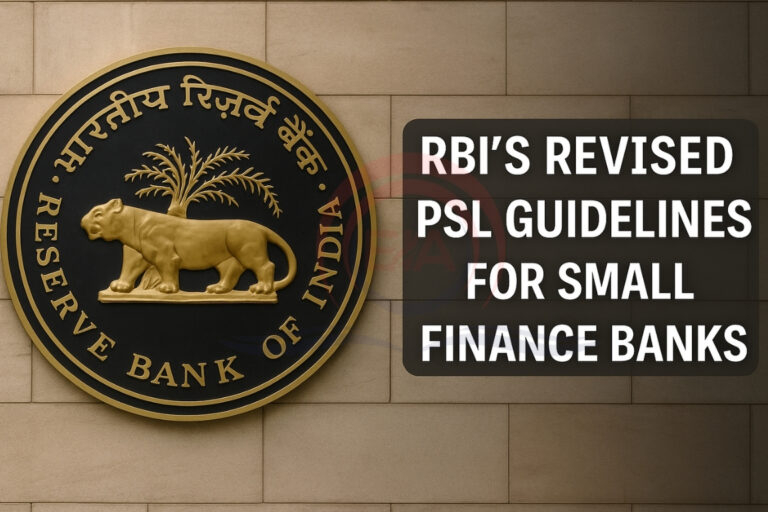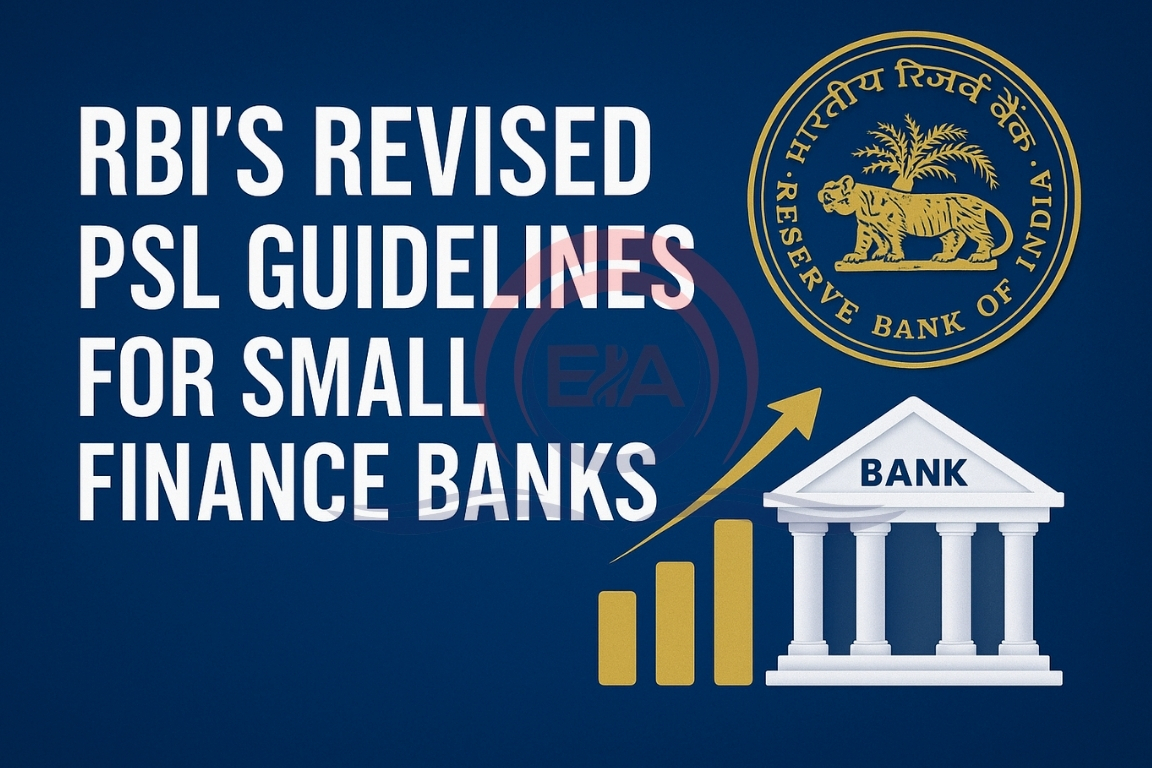The Reserve Bank of India (RBI) has eased priority sector lending (PSL) rules for Small Finance Banks (SFBs) from FY 2025–26, reducing their overall PSL obligations to improve operational flexibility.
What is Priority Sector Lending (PSL)?
- PSL is a mandate from the RBI that requires banks to lend a specific portion of their credit to priority sectors such as agriculture, MSMEs, education, housing, export credit, and weaker sections.
- It aims to promote inclusive economic development by ensuring credit access to underserved segments.
What are Small Finance Banks (SFBs)?
- SFBs are niche banks licensed by the RBI to serve small and unorganized sectors like small businesses, farmers, and low-income individuals.
- They operate under:
- Companies Act, 2013
- Banking Regulation Act, 1949
- RBI Act, 1934
- Governed by prudential norms applicable to commercial banks, including CRR and SLR requirements.
- Provide basic services: savings accounts, fixed deposits, loans, etc.

Key Features of SFBs
- Capital requirement: Minimum ₹100 crore paid-up equity capital.
- Promoters: Resident individuals/companies with 5–10 years of experience in finance.
- FDI limits: As per RBI’s policy for private sector banks.
- Objective: Increase financial outreach using low-cost, tech-driven models.
RBI’s Recent Changes to PSL for SFBs (March–June 2025)
- PSL Target Revised: PSL target lowered from 75% to 60% of Adjusted Net Bank Credit (ANBC) or Credit Equivalent of Off-Balance Sheet Exposure (CEOBE).
- Allocation Split: 40% must be allocated as per existing PSL sub-sector norms. Remaining 20% can be given to any one or more PSL sectors based on the bank’s focus or strength.
- Rationale: Offers more flexibility to SFBs. Encourages better resource management and risk distribution.
Conclusion:
The revised PSL norms provide greater autonomy to Small Finance Banks while maintaining credit flow to key sectors. This move is expected to strengthen financial inclusion without overburdening smaller banks.





